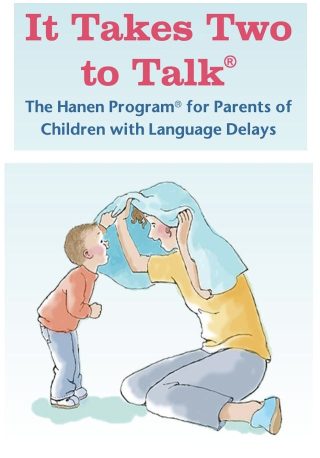
Key Strategies from It Takes Two to Talk for Enhancing Early Language Development
As a parent, watching your child struggle with language delays can be incredibly challenging and worrisome. At OneOnOne Children’s Therapy in Sydney, we understand your concerns and are here to support you. The Hanen Program: It Takes Two to Talk is an exceptional resource designed to empower parents with practical strategies to enhance their child’s language development. In this blog, we’ll share some key strategies from the program that you can start using at home today.
Why It Takes Two to Talk?
The Hanen Program: It Takes Two to Talk is based on the belief that parents are their child’s best therapists. It provides parents with tools and techniques to foster language development through everyday interactions. The program’s strategies are designed to be simple yet powerful, ensuring that parents can integrate them seamlessly into their daily routines.
Key Strategies to Enhance Early Language Development
1. Follow Your Child’s Lead
One of the fundamental principles of the Hanen Program is to follow your child’s lead. This means observing what your child is interested in and engaging with them in those activities. By focusing on what captures your child’s attention, you create more meaningful and enjoyable interactions.
How to Do It:
- Observe: Watch your child and notice what they are looking at or playing with.
- Join In: Get down to their level and join them in their activity. Comment on what they are doing and show genuine interest.
- Wait: Give your child time to respond or initiate communication. Be patient and let them lead the conversation.
2. Imitate and Expand
Imitating your child’s sounds and actions shows them that you are engaged and paying attention. Expanding on what they say helps to model more complex language structures.
How to Do It:
- Imitate: If your child says “car,” you can repeat “car” and add “fast car” or “big car” to expand on their words.
- Add New Words: Use their words as a foundation and introduce new vocabulary. For example, if your child says “dog,” you might say “brown dog” or “happy dog.”
3. Use Simple Language
Using simple, clear language helps your child understand and learn new words. Match your language level to your child’s current ability and gradually introduce more complex sentences.
How to Do It:
- Short Sentences: Use short, simple sentences. Instead of saying, “Let’s put the toys away because it’s time for dinner,” you might say, “Toys away. Dinner time.”
- Repetition: Repeat key words and phrases to reinforce learning.
4. Ask Open-Ended Questions
Open-ended questions encourage your child to think and use more language in their responses. These questions cannot be answered with a simple “yes” or “no.”
How to Do It:
- Encourage Conversation: Instead of asking, “Do you like the toy?” ask, “What do you like about the toy?” This prompts your child to use more words and express their thoughts.
5. Create Opportunities for Communication
Set up situations that naturally encourage your child to communicate. This can involve creating a bit of a challenge that requires them to use language to get what they want.
How to Do It:
- Offer Choices: Instead of handing your child a snack, offer them two options and ask, “Do you want an apple or a banana?” This encourages them to use words to make a choice.
- Pause and Wait: During activities like reading or playing, pause and wait for your child to say something before continuing. This gives them the opportunity to initiate communication.
6. Narrate Your Day
Talk about what you are doing throughout the day. This running commentary provides your child with a rich language model and helps them connect words with actions and objects.
How to Do It:
- Describe Actions: While cooking, you might say, “I am cutting the carrots. Now, I am putting them in the pot.”
- Label Objects: Name the objects you encounter during daily routines, such as “This is a spoon. We use it to eat.”
How OneOnOne Children’s Therapy Can Help
At OneOnOne Children’s Therapy, we offer the Hanen Program: It Takes Two to Talk as part of our comprehensive services. Our experienced therapists guide you through these strategies and provide personalised support tailored to your child’s unique needs. We believe in empowering parents with the knowledge and skills to become their child’s best therapist. Read about our Hanen success stories here!
Join Us for a Free Consultation
If you’re looking for effective ways to support your child’s language development, contact us today. We offer free 30-minute phone consultations to discuss your child’s needs and how the Hanen Program can help. Our Speech Pathologists are very happy to answer all your questions.
Contact Us
Call our Sydney clinics in Bondi Junction and Mascot at (02) 8065 7837 or email us to schedule an appointment. Let us support you on this journey to enhancing your child’s language skills.
Unlock your child’s potential with the Hanen Program: It Takes Two to Talk. Contact OneOnOne Children’s Therapy today and see the difference it can make!

I am extremely inspired together with your writing talents
as smartly as with the structure to your blog. Is this a paid subject or did
you modify it yourself? Anyway stay up the nice high quality writing,
it’s rare to peer a great weblog like this one today.
Instagram Auto follow!